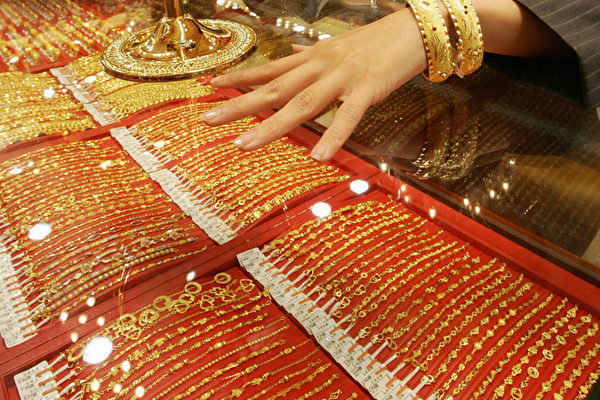Recent surge in gold prices has triggered a buying frenzy, but along with it comes the “gold scam” that deceives Chinese consumers. Thousands of Chinese individuals have fallen victim to purchasing so-called “999 pure gold” online, only to end up with counterfeit or fake gold.
The highest purity gold product is known as 999 gold, with a gold content of 99.9%. Pure gold is sometimes referred to as 24K gold.
“With more and more Chinese people looking to buy gold as an investment, fake gold is becoming a major issue in Chinese society,” said Shaun Rein, managing director of China Market Research Group, to CNBC.
China is facing its most serious inflation in 15 years, with volatile stock markets, low bank interest rates, leading the country to become a major consumer of pure gold. In 2023, China surpassed India to become the world’s largest buyer of gold jewelry.
For many, gold is seen as a reliable investment option in times of economic uncertainty. As the younger generation in China increasingly views even a gram of gold as a safe investment choice amid unstable economic times, a wave of gold consumption has swept across mainland China, from gold bars to gold nuggets and bracelets.
Data from the World Gold Council shows that Chinese consumers purchased 603 tons of gold jewelry last year, a 10% increase from 2022.
“The demand for gold, coupled with inexperienced consumers and investors who cannot differentiate between 24K gold and low-quality gold, provides scammers with an opportunity,” Rein added.
Mainland media and consumer protection websites have also reported on this issue. One consumer purchased five gold pendants on Taobao for 1,985 yuan (about $280), only to discover that the gold was fake upon conducting a flame test. Fake gold will darken or turn green under flames, while pure gold will shine when heated.
Another consumer complained that a gold product bought from Pinduoduo rusted. He claimed to have had the item appraised by a jeweler, who confirmed it was fake.
Taobao and Pinduoduo did not respond to CNBC’s requests for comments.
CNBC reports that some techniques to identify real gold jewelry include dropping the item on the floor to listen to the sound it makes or putting nitric acid on it. If the acid turns green, the product is likely made of base metal or gold-plated; if there is no reaction, it is likely genuine.
Moreover, Nikos Kavalis, founding partner of Metals Focus, a precious metals consulting company, told CNBC that fake goods can be identified from the weight, size, and volume of the gold.
“Depending on the design, the hardness of the jewelry can also reveal fake pieces—999 gold is very soft,” he added.
However, it remains challenging for ordinary consumers to determine if they have purchased fake goods.
“To protect themselves, consumers can buy gold from reputable stores, whether online or offline,” Kavalis suggested.
Counterfeit goods have been rampant in China for years. Fake products fill e-commerce platforms, “from gold to knockoff Chanel handbags,” Rein informed CNBC.
While online gold sales have grown rapidly, the World Gold Council advises consumers not to trust excessively low-priced gold products online.
After reaching historic highs in recent months, gold prices started to decline last week. The current trading price for gold is $2,300.51 per ounce.

